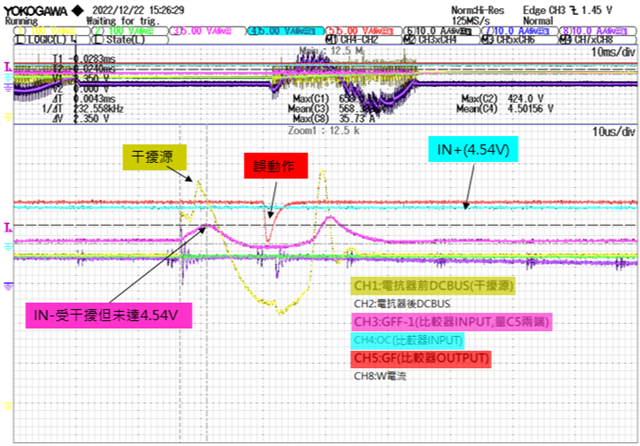Other Parts Discussed in Thread: , LM339LV
Customer facing a noise issue and wondering to know what happened. pls see below description and schematic/waveform.
We found output of LM2901 is fault trigger (CH5) during noise coupling on DC bus of the ac inverter, you can see there is a drop out voltage as red color. REF voltage is set at 4.54V. But it looks that the Input of the comparator (pin 6) is not reaching the 4.54V.
Trying to increase the C5 bigger, it could solve the issue.
1. One more question, what if the IN- (pin6) is lower than -0.3V (Single bias power +5V to 0V) during operation? If so, why input range is over range that could cause the fault trigger?
2. I find the common mode input range is different between LM2901 and LM2901B, right? Is LM2901 able to use dual bias power? how about LM2901B?
Application: AC inverter
Signal Frequency: 60KHz
Bias power of LM2901: +5V to 0V

Regards
Brian

